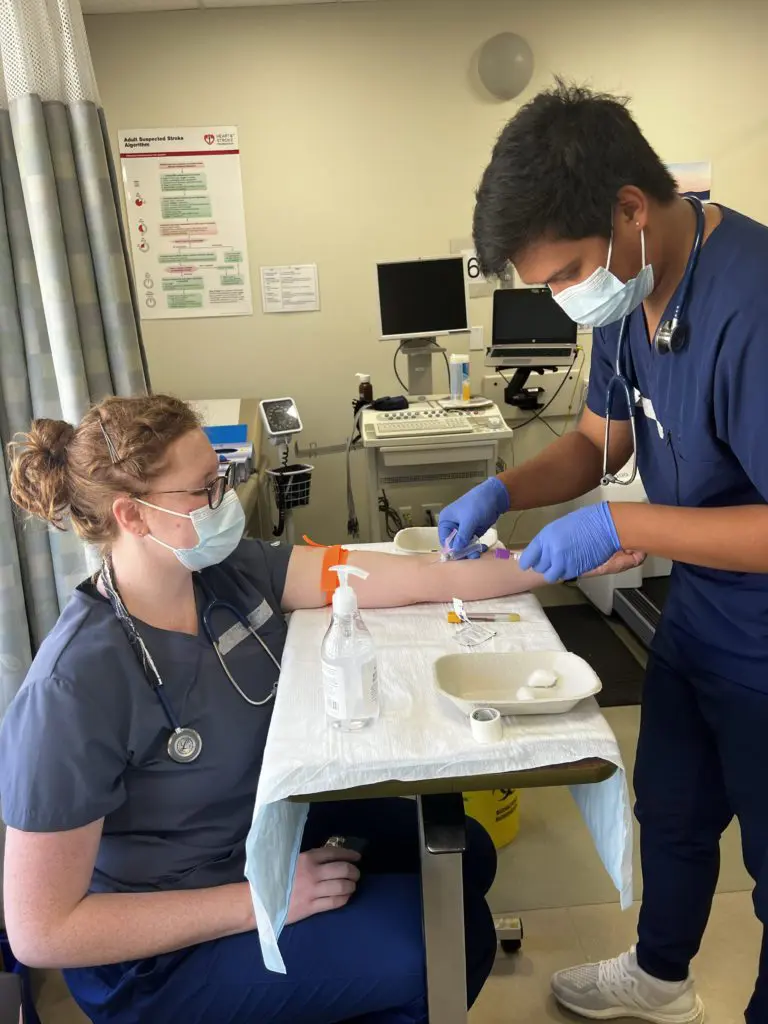Pursuing a career as a cardiology technician can be incredibly rewarding, especially for students who want to help others and make a meaningful difference. Cardiology technologists help with the diagnosis and treatment of heart disease by performing crucial tests, like ECGs and Exercise Tolerance Tests.
It’s no surprise that cardiology technicians are experts in all things heart-related. For current students and graduates, cardiology terms like pericardium, ventricle, and sinoatrial node are common knowledge. However, for those who have no experience in the field, such terms can seem complicated and daunting.
If you’re thinking about enrolling in cardiology technician courses or you have already started your program, read on for a quick look at the anatomy of the human heart.
An Introduction to the Human Heart for Aspiring Cardiology Technologists
The heart is one of the most important organs in the human body, and never stops working. It pumps blood into the lungs and through the circulatory system, bringing oxygen and nutrients to the entire body.
On an average day, the heart beats about 100,000 times and pumps over 7,000 litres of blood. Throughout a person’s entire life, the heart will beat approximately 3 billion times.
Cardiology Technicians Understand the Functions of the Heart’s Chambers
Once you start your cardiology technologist courses, you will learn that the heart is divided into four chambers: the right atrium, the right ventricle, the left atrium, and the left ventricle.
Experts know that the right side of the heart receives blood that is low in oxygen, and pumps it to the lungs. Blood first enters the right atrium, which functions as a receiving chamber. Then, it passes through the tricuspid valve into the right ventricle, which pumps the blood through the pulmonary artery and into the lungs.
Once that blood has re-oxygenated inside the lungs, it travels to the left atrium. Here, it passes though the mitral valve and into the left ventricle, which pumps the blood out of the heart and through the aorta.
The Pericardium and Three Layers of the Heart Wall
As you complete your cardiology technologist diploma, you will learn about the layers of the heart wall and the pericardium that surrounds it. The heart wall is made of three layers:
- endocardium
- myocardium
- epicardium
The endocardium is the smooth inner layer and the myocardium is the middle layer. Certified cardiology technologists know that the myocardium is made of cardiac muscles and it is the thickest layer. The epicardium is the outer layer of the heart’s wall; however, it also functions as the inner layer of the pericardium. During your courses, you will learn that the pericardium is the protective sac which surrounds the heart and keeps it lubricated with pericardial fluid.
Cardiology Experts Know How the Heart Pumps Blood
To stimulate its muscles and keep blood pumping regularly, the heart has its own natural pacemaker called the sinoatrial node. The sinoatrial node is located near the right atrium, and generates a small electrical impulse that passes through the heart until it reaches the atrioventricular node. This node is capable of slightly slowing down the impulse before it reaches the ventricles of the heart. As a result, the blood in the atria is provided with enough time to reach the ventricals.
Are you interested in learning more by enrolling in a online cardiology technologist program? Visit Stenberg College for more information or to speak with an advisor.






![An ECG demonstrates the extensive antero-septal-lateral myocardial infarction [heart attack] that Taryn witnessed.](https://stenbergcollege.com/wp-content/smush-webp/2022/12/ecg-1024x530.jpg.webp)



